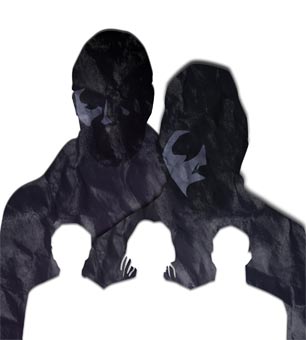Accused of domestic terrorism in the course of the Chicago NATO summit, Brian Church, Brent Betterly and Jared Chase were arguably victims of police entrapment and the use of “Red Squad” tactics the Chicago police were formerly enjoined from employing.
When local and federal police conducted a no-knock, midnight search warrant raid in May 2012 at an apartment in Chicago’s Bridgeport neighborhood, it looked at first like a failed mission.
Yes, police seized a group of 11 political activists in Chicago to protest an international summit of the North Atlantic Treaty Organization (NATO). But most of the arrestees were released without charge, and rumors soon began to swirl.
Police chained protesters to benches for 18 hours, one television station reported. Chicago Police Department (CPD) sources told Truthout the raid would unearth Molotov cocktails – homemade firebombs made of breakable glass bottles and gasoline. But they found beer brewing equipment instead.
“If anybody would like some,” one Bridgeport tenant told Truthout, “I would like to offer them a sip of my beer.”
Then things turned.
Of the 11 Bridgeport arrestees, it turned out, two were undercover cops. And beer-brewing equipment wasn’t the only thing the authorities alleged they found before and after the arrests.
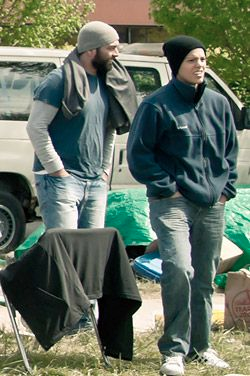 Mo and Nadia at Woodlawn (Photo Courtesy of Occupy Chicago)
Mo and Nadia at Woodlawn (Photo Courtesy of Occupy Chicago)
They found four dark beer bottles “containing a clear liquid” alleged to be gasoline. They found a pint can containing four cloths alleged by the prosecution to be gas-soaked. Further items allegedly found included another pint can containing four glass vials each containing saturated cotton, along with four gas-soaked pieces of cloth, an empty gas can, a black tactical vest and a black gas mask. They found a compound bow and nine arrows.
They found two knives in sheaths, two swords in sheaths, and a set of handcuffs. They found a metal throwing star (a sharp, hand-held blade). They found a PVC pipe with a black flag attached. Authorities also found a printed photo of the female undercover officer who led SWAT teams to Bridgeport in the first place.
This litany of materials, according to what police told Truthout, belonged to three men visiting Chicago from Florida to protest the NATO Summit – and, allegedly, to set parts of the Windy City aflame.
Dubbed the “NATO 3” in media reports, they face maximum sentences of 85 years in prison apiece if convicted, under a decade-old Illinois law that had never been used before. And that was without ever carrying out an attack.
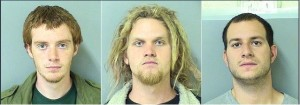 Mug shots taken of the “NATO 3” after their arrests (From Left to Right: Brian Church, Brent Betterly, Jared Chase)
Mug shots taken of the “NATO 3” after their arrests (From Left to Right: Brian Church, Brent Betterly, Jared Chase)
Unlike the Boston bombers, the NATO 3 hadn’t set off any bombs prior to their arrests. Unlike the Fort Hood shooter, they hadn’t shot anyone. They hadn’t thrown molotov cocktails. They hadn’t even activated dummy detonators, as was the case with five Cleveland activists in a similar domestic terrorism investigation last year.
They just ran their mouths. They just talked about revolution. And they allegedly went far enough into a conspiracy to elicit major charges.
To this day, more than a year after their arrest in Bridgeport, the NATO 3 are still sitting in Chicago’s Cook County Jail, awaiting their trial, which is set to begin on September 16, one day before the two-year anniversary of the Sept. 17, 2011, launch of Occupy Wall Street.
Their case is a big one. It’s the new face of US counterterrorism investigations – a template for pre-crime arrests, performed through entrapment by police – to stop supposedly dangerous political acts before they happen.
And if the “3” are convicted in September, it could set a troubling precedent far beyond the borders of Illinois.
Who are the NATO 3?
While Occupy Wall Street helped to ramp up the possibility for major protest action in cities such as Chicago, it also brought together young activists who might never have met otherwise. Case in point: Chase and Betterly.
The duo met in Washington DC at an Occupy protest. They were arrested, arm in arm, in front of the White House, while protesting the National Defense Authorization Act.
It wasn’t the first arrest for either man.
Years ago, when Chase was 18 and living with his folks in Keene, N.H., he was charged with “attempt to commit an assault and reckless endangerment after allegedly pulling a knife on another man,” according to the New Hampshire Union-Leader.
A month later, Chase received more charges, this time for first-degree assault and conduct after an accident, which earned him nine months in jail.
“In that incident, Chase was found guilty of hitting a man with a car after the two had a fist fight,” said the Union-Leader article. “The victim’s impact with the car damaged the windshield, but the man was not seriously injured. . . .The conduct after an accident charge was added because Chase drove off after striking the man.”
He spent six months in jail. He had trouble with drugs when he got out. He violated his probation three times and then eventually moved to Boston, where he stayed for years and worked as a cook at a P.F. Chang’s.
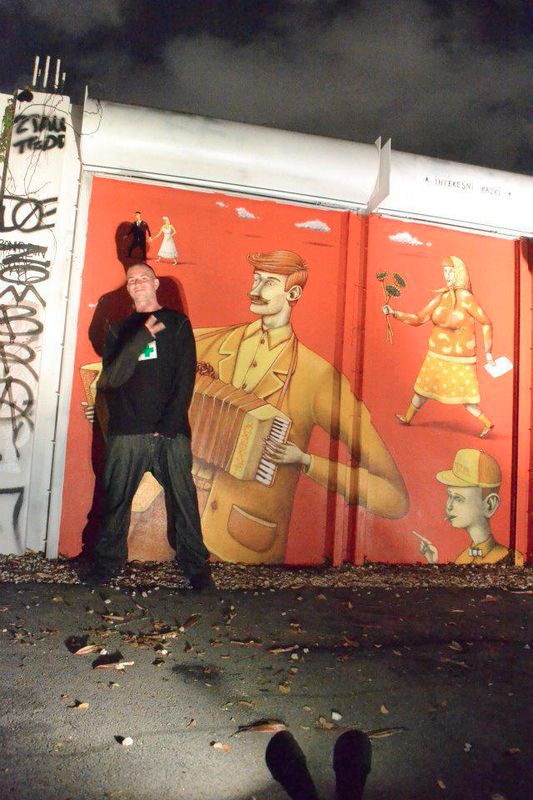 A photo from Jared Chase’s Facebook
A photo from Jared Chase’s Facebook
Late last year, Chase left his life in Boston. Later, he headed to Rhode Island briefly and then to Washington, D.C.
After Chase and Betterly were arrested outside the White House, they headed toward Oakland Park, Florida, just north of Fort Lauderdale, where Betterly’s from, before heading to Miami.
Chase was arrested again as part of a group during Occupy Miami before heading off to Chicago. That group was found with bolt cutters, a baseball bat and a sledgehammer, but they were not charged.
The Miami New Times described Betterly, “with his good looks and dreadlocks,” as “a hippie who attended rainbow gatherings.” He had a criminal record in Florida, but nothing violent: Last September, he and a friend were drunk when they broke into a high school, did some after-hours swimming and broke a cafeteria window. Police picked them up. Betterly was released, but he still faces a pending burglary charge.
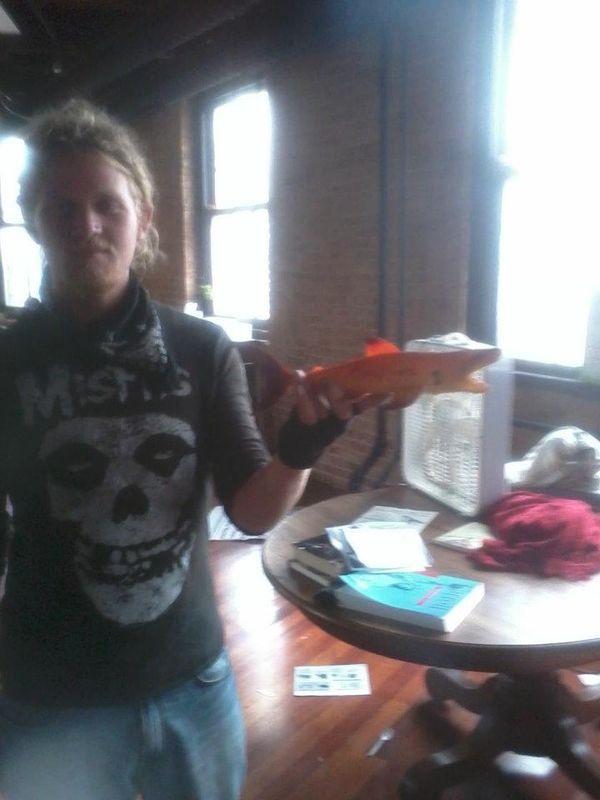 A photo from Brent Bettery’s Facebook
A photo from Brent Bettery’s Facebook
New Times reported that Betterly was known among those at Occupy Miami “for his creativity and commitment to fighting foreclosures,” while Chase was seen as more “enigmatic”: “The chain-smoker was a computer whiz who . . . spent days wandering around downtown and talking to homeless people.”
On March 14, 2012, Occupy Miami was raided by police, and Chase was there when it happened. It was depicted on Chase’s Facebook page, in fact, underneath a picture of a SWAT team outside an apartment complex housing members of Occupy Miami.
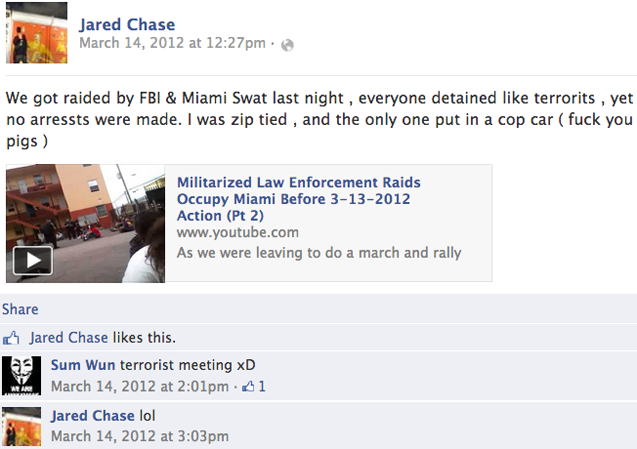
Occupy’s Open Door for Infiltration: Enter “Mo” and “Nadia”
When it comes to protecting itself from prosecution, one of the Occupy movement’s truest merits – the inclusion of “the 99 percent” and acceptance of anyone willing to lend a hand – is also its fatal flaw.
CPD undercover officers reportedly began their investigation in February 2012 as part of a temporary 90-day assignment to monitor NATO protests. Undercover officers soon entered Occupy Chicago posing as activists and did so with ease.
Occupy Chicago organizer Matthew McLoughlin explained the hectic nature of preparations in the months leading up to the NATO Summit protests.
“Every day of the week . . . we had an action going on. So we were making sure that went off without a hitch,” he told us. “And then we had out-of-towners pouring in, so we had to take care of that
“We weren‘t really prepared“ to deal with undercover police officers, he continued.
That’s how two undercover officers, going by the names “Mo” and “Nadia,” would soon become the NATO 3’s downfall.
In early March, an undercover officer – a big man, a little over 6 feet tall, bearded and dark-featured, in his mid-30s with broad shoulders, wearing jeans, a black hoodie and a black winter cap – was first spotted by central organizers of the NATO Summit protests at a planning meeting.
He went by “Mo.”
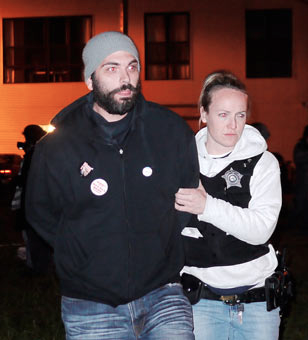 A photo of “Mo,” the pseudonym for the undercover informant agent responsible for the entrapment-created arrests of the “NATO 3” and now two others taken by an activist and submitted to the National Lawyer’s Guild Chicago. (Photo Courtesy: National Lawyers Guild)
A photo of “Mo,” the pseudonym for the undercover informant agent responsible for the entrapment-created arrests of the “NATO 3” and now two others taken by an activist and submitted to the National Lawyer’s Guild Chicago. (Photo Courtesy: National Lawyers Guild)
According to Joe Iosbaker of the Committee to Stop FBI Repression, during small group introductions, Mo said he became an activist because he had been laid off from a job. “Shit blew up,” he said, and Occupy Chicago started. No further explanation was needed.
Mo would show up at a public Occupy event later in March with a woman who would always be by his side: a young woman who went by “Nadia Youkhana.”
Nadia was tall, with tanned skin. Some Occupy sources told Truthout she claimed to be Syrian. Many activists said she was charming and bubbly. They were attracted to her seeming genuine excitement to get involved with activism. If “Mo” was the brawn of the two-person team, “Nadia” was the brains.
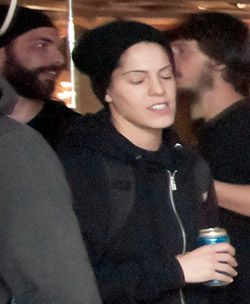 Photo of “Nadia” released by Occupy Chicago
Photo of “Nadia” released by Occupy Chicago
Nadia showed up alongside Mo at an Occupy General Assembly – a completely open meeting for anyone new to the movement – to introduce themselves, saying they were cousins. She talked with Occupy Chicago organizer David Orlikoff who oversaw a number of list-serves and who generally passed information about meetings to anyone who needed it.
Nadia seemingly saw this organizer as un-dangerous and useful; she kept in touch with him to monitor when various meetings were taking place and rallies were being planned, as well as to get email addresses of everyone involved in Occupy Chicago.
Mo and Nadia were on a 90-day temporary duty undercover assignment as part of CPD Field Intelligence Team 7150 (FIT 7150). The team was tasked with “attend[ing] Occupy Chicago and anarchist movement events for the purpose of observing and listening to reports of any planned criminal activity” in the run-up to the NATO Summit, according to pre-trial court documents.
Truthout visited the apartments of both Mo and Gloves, but both denied comment.
Woodlawn
The Woodlawn Mental Health Clinic on Chicago’s south side was one of six city-operated facilities scheduled for closure in April 2012. Occupy Chicago activists planned to protest on a daily basis.
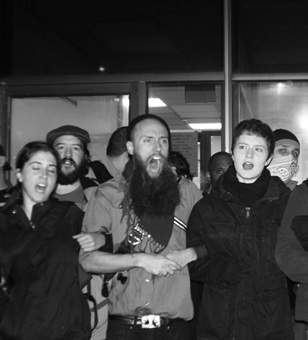 Occupy Chicago activists link arms to form a human chain outside the occupied Woodlawn Clinic on the night of Thursday, April 12 2012. (Photo: Marcus Demery / Flickr)
Occupy Chicago activists link arms to form a human chain outside the occupied Woodlawn Clinic on the night of Thursday, April 12 2012. (Photo: Marcus Demery / Flickr)
At one of these protests in early April, 23 were arrested. According to James Arentz, a Chicago activist involved in the Mental Health Movement, Mo and Nadia thought a second protest – and an inevitable series of arrests – might cause some protesters to plan something violent.
So when 10 protesters were arrested on April 23, Mo and Nadia were there.
“At the time, I couldn’t figure out why we were under such close surveillance this particular night,” recalled Rachel Unterman, press liaison for Occupy Chicago. “I thought they were overreacting to a few tents and a handful of expected arrests. Now I know that they had undercover officers in the field, which raised the stakes.”
The 10 spent the night in a Cook County Jail facility together. Some of them found “Mo” and “Nadia” to be a bit odd.
“When she walked into the police van was the first time I had ever seen her,” Christina Pillsbury told Truthout, a University of Chicago student who was arrested with Nadia that day. “It didn’t really make sense because I had seen everyone else arrested with me that day before, but I didn’t really have time to think about it at the time, either.”
Pillsbury recalls her being “really funny” and “really liking her at first.” Nadia also told Pillsbury and her fellow arrested activists “really intense stories about her sister’s mental illness.”
But she also recalls Nadia trying to rile up her and the other women arrested that day in jail. Pillsbury says Nadia started to “freak out” when the police were giving her stuff back to her and they only gave her one of her two cell phones – in hindsight, the two phones being another telltale sign that something was off, she noted.
“It seemed as if she was trying to get us in the whole ‘fuck the police’ mentality, but she was barking up the wrong tree,” noted Pillsbury. “We didn’t even do anything violent to be in jail in the first place; we just stood our ground across the street from Woodlawn in an act of nonviolent civil disobedience.”
Mo had told a story paralleling Nadia’s at Woodlawn Clinic prayer vigil earlier that day, shared by Mental Health Clinic activist Matt Ginsberg-Jaeckle. Mo said he had a “cousin struggling with mental health issues” and that was why he felt strongly about the events unfolding at Woodlawn, compelling him to take part in them.
Mo also played the violence game. While in lockup, he approached one of the arrested activists. “What’s our next step?” he asked Ginsberg-Jaeckle. “We need to step this up a notch.”
Another Woodlawn activist, James Arentz, locked up with Mo, recalled him saying he was once arrested for “violence,” as if to gauge if his compatriots in jail were also interested in participating in illegal violent acts.
Arentz said he showed little interest in taking this route, and it was a route he had never gone down before as a veteran, middle-aged activist and father. Mo soon lost interest in him after a round of intrusive questioning.
Roger Shuy, an emeritus professor of linguistics at Georgetown University, refers to tactics utilized in jail by Mo and Nadia as the “hit-and-run” strategy for undercover cops.
“If the target does not say anything that seems to point to his guilt, many undercover operators begin to ‘drop in’ hints about illegality, sometimes clear and sometimes not,” he writes in his book Creating Language Crimes: How Law Enforcement Uses (and Misuses) Language. “It is commonplace that when they drop these hints into the conversation and are unsure how their targets might react, they often quickly change the subject to something benign before they give up their turn.”
May Day, May Day
Prosecution motions based on social media surveillance claim that in south Florida, Betterly and Church made plans over Facebook, in private messages, to visit Chicago for NATO. That was April 19, the date the “conspiracy to commit an act of domestic terrorism” began, according to Illinois state prosecutors.
In those messages, Church said he wanted to “get on the front lines” of the protests. Betterly agreed, writing that the Chicago NATO “protests are gonna get ugly.” During that same interaction, Betterly asked if Chase would also make the trip to Chicago.
On April 24, Betterly discussed molotov cocktails with a female acquaintance on Facebook after asking that acquaintance to come to Chicago and then typing, “riot!!” Betterly responded: “u cant apologize after throwing a molotov cocktail.” Betterly wrote that he might “catch some charges” in Chicago.
Chase, Betterly and Church were part of the “black bloc” for a large march planned on May 1, known by leftist activists as “May Day.”
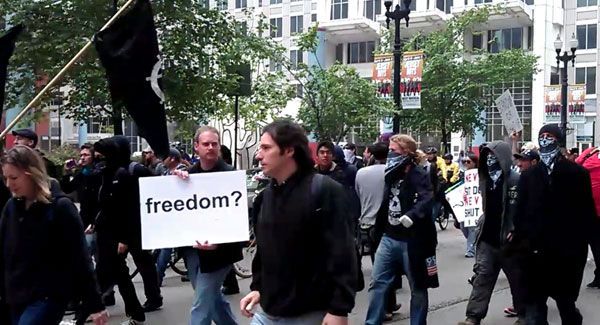 Betterly in blue jeans and blonde hair with bandana over his face, Chase on far right in all black and black bandana over face. Rachel Unterman of Occupy Chicago helped confirm the identities in this and the following photos. (Photo Courtesy of Occupy Chicago)
Betterly in blue jeans and blonde hair with bandana over his face, Chase on far right in all black and black bandana over face. Rachel Unterman of Occupy Chicago helped confirm the identities in this and the following photos. (Photo Courtesy of Occupy Chicago)
Black bloc is a protest tactic in which activists dress in all black, often wearing bandanas, ski masks and other clothing to conceal their faces and identities and to appear as one group in solidarity. On May Day, Nadia and Mo were there, posing as members of the bloc.
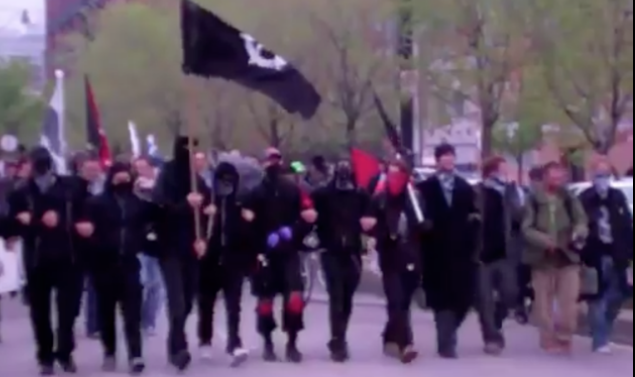 Photo obtained from video of May Day rally shot by member of Occupy Chicago. “Nadia” in white shoes, Church in red bandana, Chase to his right and Betterly to far right.
Photo obtained from video of May Day rally shot by member of Occupy Chicago. “Nadia” in white shoes, Church in red bandana, Chase to his right and Betterly to far right.
Occupy sources said Nadia was pushing for militant violence within the black bloc, which can be seen on a YouTube video, as well.
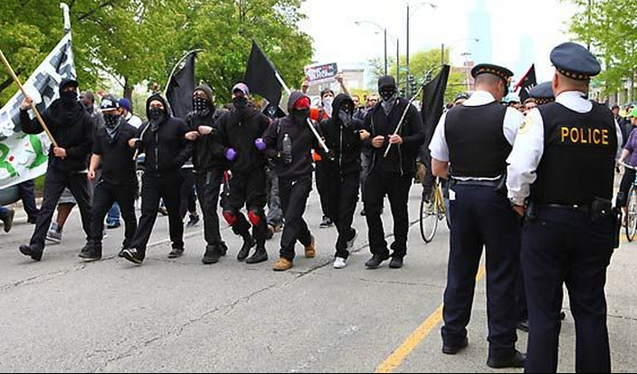 Church in red bandana, Nadia in white shoes and Mo to the right with anarchist black flag (Photo Courtesy of Occupy Chicago)
Church in red bandana, Nadia in white shoes and Mo to the right with anarchist black flag (Photo Courtesy of Occupy Chicago)
Later that night, Church reportedly told “Mo” and “Nadia” that he wanted to find “targets” for the NATO Summit. Occupy sources said Nadia actively attempted to provoke violence that night, asking people if they wanted to go out into the streets and light dumpsters on fire. That never panned out.
On May 2, Church met up with Mo and Nadia in Chicago’s financial district. According to prosecution motions, “Church immediately told the undercover officers to remove the batteries from their [cellphones] so that the conversations could not be subject to government eavesdropping.”
Church had come there with an assault vest he told Mo and Nadia he would like to fill with foam for more cushioning. On that day, he also allegedly asked Mo and Nadia where he could purchase a filter from an Army Plus store (aka a gas mask) and where he could buy three assault rifles, plus a long rifle.
Mo and Nadia said Church told them, “If a cop is going to be pointing an AR at me, I’ll be pointing one back at them.” They claim he also said he wanted to make smoke bombs to throw during the NATO Summit and that he owned a bow and arrow that could shatter a window.
Church allegedly formulated a grand plan that day with Mo and Nadia to attack four police districts and destroy as many police vehicles as possible. He’d do the latter by bringing together groups to destroy police vehicles days before the NATO Summit. Church reportedly also said he wanted to “hit” a Chase Bank and shoot an arrow through Mayor Emanuel’s window.
“If everything goes according to plans, I am leaving right after NATO,” he allegedly told Mo and Nadia during this meeting. “The city doesn’t know what it’s in for, and after NATO, the city will never be the same,” he reportedly told Mo and Nadia.
On May 4, Brian Church and Jared Chase met with Mo and Nadia at a park in Chicago’s Bridgeport neighborhood. At this meeting, according CPD search warrant documents,* they discussed destroying police vehicles parked in police parking lots during the NATO Summit to damage and disrupt their response to protesters.
On May 8, Mo and Nadia were invited into the Bridgeport apartment for the very first time.
While there, CPD search warrant documents allege, Brian Church invited them into a bedroom and showed them a bow and arrow with 10 arrows, two metal swords, one silver Chinese throwing star, two knives with brass knuckle handles, a black gas mask, knee/shin pads and arm pads. He also told Mo and Nadia he had a homemade mortar.
Chase allegedly asked the two undercover officers where he could buy cocaine or heroin.
On May 14, the use of molotov cocktails during the NATO Summit was first mentioned by Church to Mo and Nadia. According to CPD search warrant documents, Church also said at the May 14 meeting that he had built a mortar gun with PVC pipe and a piece of wood and that he had filled the mortar gun with bottle rockets, further noting that it was operational.
Church also told Mo and Nadia that they seemed like two “anarchists in a pod,” and he would like for them to travel with him to other states during his activist journey. Church allegedly offered them the opportunity to travel with him if they were willing to shoot a rifle, point it, and shoot someone with it.
On May 16, the day of the raid, Mo and Nadia met the “NATO 3” for a protest and convened at the Bridgeport apartment later that night, according to CPD search warrant documents.
Once inside, they discussed how to make and then constructed four molotov cocktails for use at the NATO Summit. Mo and Jared left for BP to buy the gasoline for the molotovs, the last necessary ingredient for the cocktails.
Truthout has obtained the video of what appears to be Mo and Jared Chase purchasing the gasoline from the BP Station, published here from multiple angles for the first time.
“Church handed one of the officers a knife and advised him to cut a bandana in strips for use as fuses for the molotov cocktails,” a Feb. 15, 2013, court document states. “Betterly cautioned that gasoline should not be poured directly on the cloth; the cloth should be soaked in the bottles. Chase poured the gasoline into the bottles and then turned the bottles over so the strips could be soaked.”
While making the cocktails, Church allegedly asked Nadia if she were “ready to see a police officer on fire.” That’s when the police decided to act. That night, officers from the CPD and the FBI raided the Bridgeport apartment.
Nowhere in the search warrant – or in any of the hundreds of pages of discovery documents later made public – does the prosecution mention one pivotal point: Two aggressive undercover cops helped along – and possibly even incited – the plot.
Mapping the Chicago Activist Community’s “Human Terrain”
It should go without saying that the NATO 3 are not being represented by high-priced attorneys. They are, however, being represented by attorneys at the People’s Law Office of Chicago (PLO), which specializes in high-profile civil rights cases involving law enforcement, and others.
On April 30, the office filed court papers arguing that under a recent consent decree – an agreement dissolved in 2009 that limited undercover police activities by the City’s notorious Red Squad, a unit that spied on the political and social activities of Chicagoans during the 1950s and 1960s – CPD’s undercover operation in the NATO 3 case would have been illegal.
“At its heart, the consent decree prohibited precisely the type of undercover activities that CPD engaged in here,” PLO argued. “[It] appears to be the broadest foray into undercover activities implicating the First Amendment.”
PLO also argued that the spying and entrapment attempts were motivated by the ideology of the activists, not an imminent threat to public safety.
“The state has acknowledged a . . . broader investigation of Occupy Chicago . . . and political organizing surrounding the NATO Summit,” the PLO stated in a court motion. “This large, overarching operation began by March 2012 and was . . . based in part by political affiliations and beliefs.”
The Booz Allen Hamilton Connection
Court records also show that members of the FBI’s Chicago Regional Computer Forensic Laboratory (RCFL) may be called to testify if the case goes to trial.
A domain name search for Chicago RCFL’s web site shows that it was registered by military and intelligence contractor Booz Allen Hamilton (BAH).
BAH is a major US Central Intelligence Agency (CIA) and US National Security Agency (NSA) contractor abroad. Former CIA Director R. James Woosley once served as BAH Vice President, while Director of National Intelligence James Clapper once served as a BAH executive and current BAH Vice Chairman John “Mike” McConnell held Clapper’s position under former President George W. Bush.
Edward Snowden – the NSA whistleblower who revealed classified NSA spy program to The Guardian and The Washington Post – was a contractor for BAH at the time of the leak.
Michael Hayden, the former head of the NSA and CIA, as well as the deputy director of National Intelligence has referred to BAH as a “Digital Blackwater,” a reference to Blackwater USA – now known as Academi – the “world’s most powerful mercenary army.”
“[BAH] is one of the NSA’s most important and trusted contractors. It’s involved in virtually every aspect of intelligence and surveillance,” writes investigative journalist Tim Shorrock in a recent article. “Among other secret projects, Booz was deeply involved in ‘Total Information Awareness,’ the controversial data-mining project run for the Bush administration.”
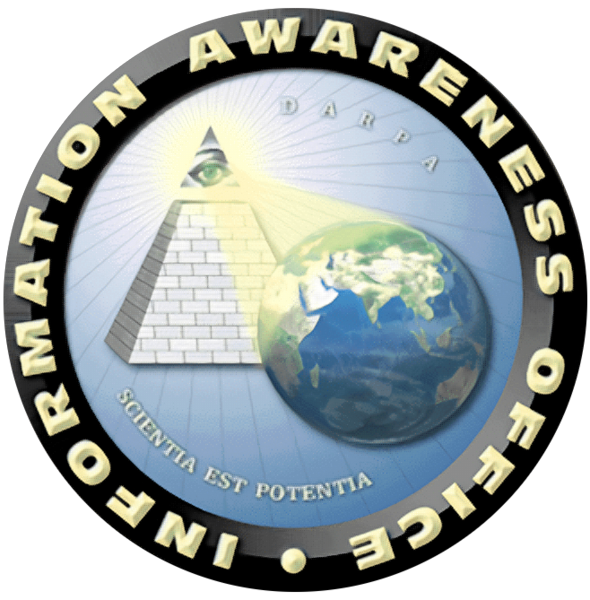 Photo Credit: Wikimedia Commons
Photo Credit: Wikimedia Commons
Missed in Shorrock’s analysis: BAH also provides IT and logistical support for the Pentagon’s Human Terrain System and its Human Terrain Teams, which “map the human terrain” of communities abroad for the military and CIA.
A career New York cop, Chicago Police Department (CPD) superintendent Garry McCarthy is no stranger to the Human Terrain System.
It wasn’t long he after formally assumed the mantle of CPD superintendent in 2011 that McCarthy drew fire for having allowed a spy ring tasked to “map the human terrain” of Newark, N.J.,’s Islamic community to operate there, where he served as police chief before taking the position as CPD’s top dog.
McCarthy also served as an NYPD commander when the police set up spy rings before the 2004 Republican National Convention in New York City and during “CIA on the Hudson,” the joint NYPD/CIA project that was set up and run by former CIA Deputy Director for Operations David Cohen to “map the human terrain” of New York City’s Islamic community.
Shortcomings of “Mapping Human Terrain”
The problem with “mapping the human terrain”: It relies on overly-simplistic stereotypes. Case in point: FBI Special Agent Maureen Mazzola.
Mazzola is designated in court records as one of the people the state of Illinois may call to testify if the “NATO 3” case goes to trial. She’s also infamous for an incident based on stereotypes that unfolded before the 2008 Republican National Convention (RNC).
In a nutshell, Mazzola attempted to recruit a University of Minnesota (U of M) student in spring 2008 to join the FBI’s ranks as an informant. Conned into the meeting by U of M’s police sergeant, the student was displeased and came to the press to tell his story.
“She told me that I had the perfect ‘look,'” recalled the student after the incident. “And that I had the perfect personality – they kept saying I was friendly and personable – for what they were looking for.”
Stereotypes were the name of the game for the FBI and Mazzola, as an account in the Minneapolis/St. Paul’s City Pages said.
“What they were looking for [was] someone to show up at ‘vegan potlucks’ throughout the Twin Cities and rub shoulders with RNC protesters, schmoozing his way into their inner circles, then reporting back to the FBI’s Joint Terrorism Task Force, a partnership between multiple federal agencies and state and local law enforcement,” reads City Pages’ rare inside look into the recruitment of an informant.
The days leading up to the 2008 RNC saw the arrest of Scott DeMuth, an animal rights activist and member of the Animal Liberation Front (ALF). As the ultimate result of a fishing expedition led by Mazzola, DeMuth was later charged for an “animal enterprise terrorism” plot that took place in a University of Iowa lab dating back to 2004 and ended up pleading guilty to a lesser charge and serving six months in federal prison.
“As Special Agent Maureen Mazzola testified to on the stand in Scott’s pre-trial hearing, the FBI used the pretext of this raid as a fishing expedition, searching Scott’s room for anything linking him to ‘criminal activities’ that fell well outside of the scope of the search warrant being executed,” his support committee explained. “In this process, Mazzola came across a journal that she mistakenly believed linked him to the 2004 ALF raid at the University of Iowa.”
Court documents for that case show that Mazzola – unsurprisingly, given the backdrop – was working with an informant leading up to DeMuth’s eventual arrest. Mazzola was one of the people the US government called to testify as a witness during the DeMuth trial.
One Man’s Terrorist, Another Man’s Language Criminal
Digging deeper, there’s also the question of “Why ‘terrorism’?” Why not just leave the NATO 3’s charges at the several felony counts?
PLO tackled the issue of terrorism head-on.
PLO made the legal argument in Jan. 2013 that the language in Illinois’ terrorism statute may be overly broad and unconstitutional. Judge Wilson, though, denied this constitutional challenge two months later, saying the law under which the three were charged is constitutional on its face but withheld judgment on the as-applied challenge, providing the defense with the option to renew the as-applied challenge as trial approaches.
It all boils down to politics, and a May 2012 Chicago Tribune story demonstrates the political nature of the charges, which were decided on at the proverbial 11th hour the night before the May 19, 2012, bail bond proffer hearing.
“[Cook County Attorney General Anita] Alvarez and seven of her prosecutors spent Friday evening analyzing the statute and weighing whether their case rose to the level of domestic terrorism,” reported the Tribune. “It was a marathon meeting with lawyers reading the statute out loud at times. Others ran in and out of the room to look up case law on other potential charges, such as conspiracy to commit arson. After four hours of debate, Alvarez polled those in the room and had a clear consensus that the terrorism statutes offered the toughest penalties and sent the strongest message.”
As an important parallel, a 2009 Neo-Nazi and right-wing terrorism threat report done by the US Dept. of Homeland Security (DHS) went unpublished and censored, showing the truly political nature of “terrorism” charges. The author of the report, a former DHS analyst, has asserted that he warned of the right-wing “terrorist” elements that fueled the 2012 attack on a Sikh temple in Wisconsin – and that his warnings were ignored.
Another example: In Boston, local police in conjunction with federal law enforcement, focused attention on the political activism of local Occupy activists at the same time they missed the actual threat posed by the Boston Marathon bombers.
Contentious political events are, in many ways, a trap set to capture those who even insinuate the wrong kind of political language – “creating language crimes” – as Shuy put it in his eponymous book.
“The persons wearing the undercover mike . . . begin their work with a distinct power advantage over those they talk with,” Shuy writes in his book. “In undercover conversations, when the targets think they are simply engaged in everyday conversations, they are less on alert and are frequently less careful about how they say things. The persons doing the taping, in contrast, have the power to decide when to tape, who to tape, when to start the taping, when to stop, and even how to slant the conversation to serve their own ends.”
Shuy refers to this as “manipulative seduction.”
“When being seduced,” Shuy adds, “the listener does not understand the hidden intent of the seducer.”
The overall message is clear: Whatever your political stripe in the United States, the authorities are watching. That’s no longer a conspiracy theory. It’s policy and now just a question of what the authorities do with that intelligence.
And that decision is by-and-large a political one.
If any case in the last decade has shown that reality, it’s the case of the NATO 3.
Their case revealed authorities watching anarchists and the Occupy movement – specifically designated as the reason for the creation of Field Intelligence Team 7150 – with an all-seeing eye.
These young men fit the stereotypical profile of what a homegrown terrorist is “supposed” to look like. They’re politically active and angry with their country’s direction, burdened with nothing to lose but their freedom, and maybe, their lives.
The CPD and state of Illinois would like you to believe that makes them dangerous – unhinged and ready to strike out and hurt people with impunity, at any moment.
But perhaps they weren’t. The burden of proof falls on the prosecutors to make the case that they were.
*The authors reviewed these 70 pages of documents at the courthouse.
This article was amended July 9, 2013.
Help us Prepare for Trump’s Day One
Trump is busy getting ready for Day One of his presidency – but so is Truthout.
Trump has made it no secret that he is planning a demolition-style attack on both specific communities and democracy as a whole, beginning on his first day in office. With over 25 executive orders and directives queued up for January 20, he’s promised to “launch the largest deportation program in American history,” roll back anti-discrimination protections for transgender students, and implement a “drill, drill, drill” approach to ramp up oil and gas extraction.
Organizations like Truthout are also being threatened by legislation like HR 9495, the “nonprofit killer bill” that would allow the Treasury Secretary to declare any nonprofit a “terrorist-supporting organization” and strip its tax-exempt status without due process. Progressive media like Truthout that has courageously focused on reporting on Israel’s genocide in Gaza are in the bill’s crosshairs.
As journalists, we have a responsibility to look at hard realities and communicate them to you. We hope that you, like us, can use this information to prepare for what’s to come.
And if you feel uncertain about what to do in the face of a second Trump administration, we invite you to be an indispensable part of Truthout’s preparations.
In addition to covering the widespread onslaught of draconian policy, we’re shoring up our resources for what might come next for progressive media: bad-faith lawsuits from far-right ghouls, legislation that seeks to strip us of our ability to receive tax-deductible donations, and further throttling of our reach on social media platforms owned by Trump’s sycophants.
We’re preparing right now for Trump’s Day One: building a brave coalition of movement media; reaching out to the activists, academics, and thinkers we trust to shine a light on the inner workings of authoritarianism; and planning to use journalism as a tool to equip movements to protect the people, lands, and principles most vulnerable to Trump’s destruction.
We’re asking all of our readers to start a monthly donation or make a one-time donation – as a commitment to stand with us on day one of Trump’s presidency, and every day after that, as we produce journalism that combats authoritarianism, censorship, injustice, and misinformation. You’re an essential part of our future – please join the movement by making a tax-deductible donation today.
If you have the means to make a substantial gift, please dig deep during this critical time!
With gratitude and resolve,
Maya, Negin, Saima, and Ziggy
